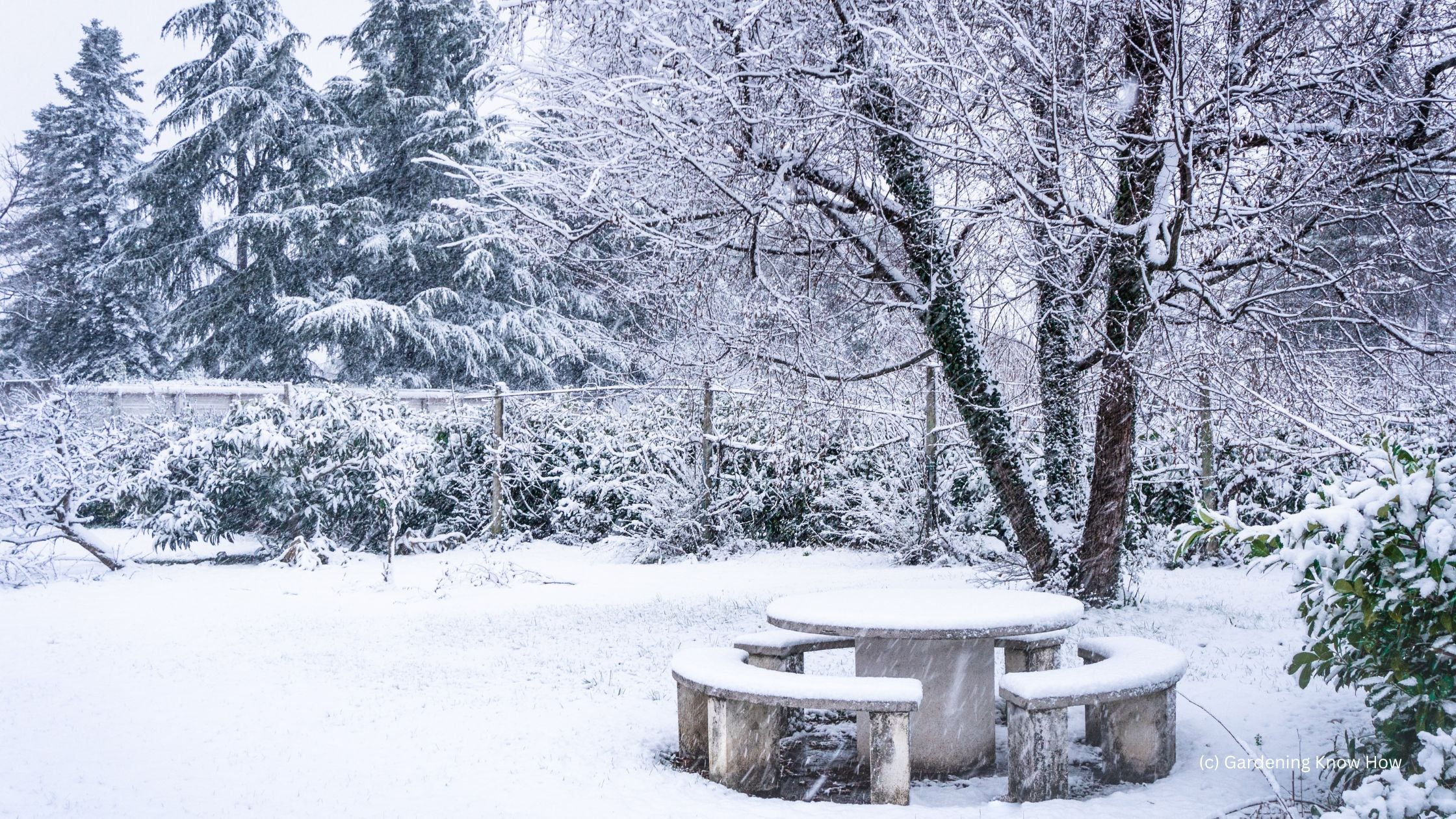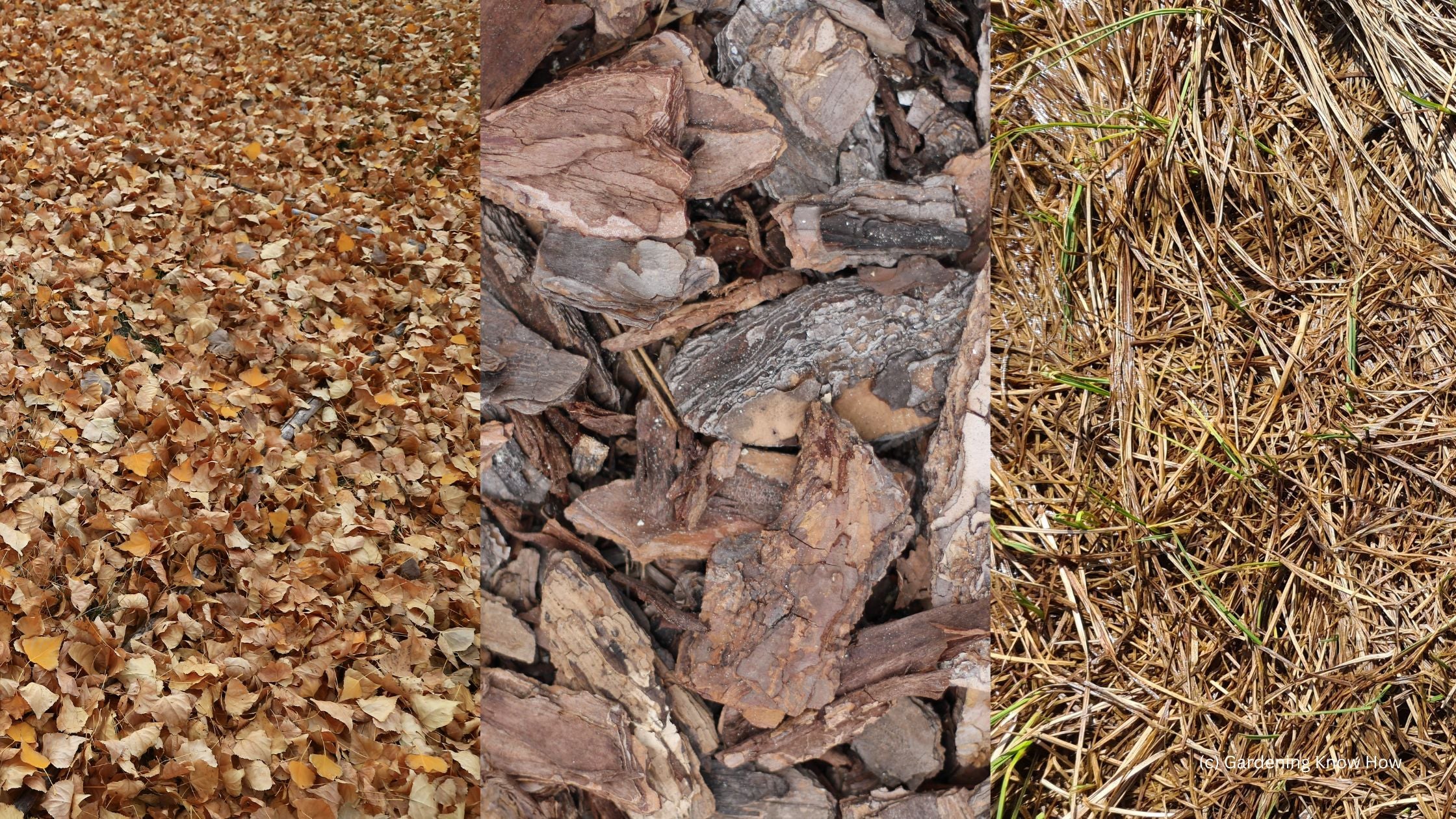October in the Garden

Get Your Garden Ready for Winter!
As winter approaches, October is the best time to prepare your trees, shrubs and perennials for the cold months ahead. This is especially important for young, newly planted trees, shrubs, perennials and perennial fall transplants.
Proper winter plant preparation is more important now than it has ever been. It is quite evident that our climate has changed over the years and winter can be very drying, overly wet at times and experiences extreme fluctuating temperatures. Plants must endure these winter conditions over a five month period often sadly resulting in winterkill.
The key to successfully see your plants through the winter is to take a proactive approach to your plants health in spring, summer and fall by using proper cultural practices during the growing season. This means educating yourself on your plant’s needs and providing them with the proper care at this time; water, fertilizer, proper drainage and soil conditions, and good planting and pruning practices. Do not be surprised when a weak or poorly cared for perennial plant does not make it through our Saskatchewan winter. Give them what they need during the growing season and you will be rewarded for many springs to come!
Newly planted trees and shrubs need extra attention in fall to help them through the first two to three winters while they are establishing a strong root system. Again, it is most important to have properly planted and cared for them during the spring and summer.
Trees and Shrubs
By now you should have stopped fertilizing your trees, shrubs and perennials. In fact, rule of thumb is to stop all fertilization by August 15 each year. Fertilizing after this time will only encourage the plant to put out new growth which will be frozen off in the weeks ahead. As you can imagine, this is of no benefit to the tree, shrub, perennial or your time and pocketbook!

While pruning is not advised at this time of year, it is important to look at your trees/shrubs for any damaged or broken branches and prune them back to the branch bark collar between the trunk and branch attachment. The branch bark collar is the bulbous area where the branch meets the tree trunk or where twigs meet a main branch. Excessive snow loads on branches cause previously cracked branches to fall; tearing the bark and creating new wounds for insects and disease to enter in spring.
With cooler fall weather settling in, water your trees and shrubs less often than summer but do still deep water up until the top 5 cm of soil freezes. A root irrigator such as a Ross Root Feeder (without the fertilizer pellets) is especially beneficial for watering as it delivers the water to the deeper feeder roots under the tree canopy dripline. This deep watering is especially beneficial for shrubs under house overhangs and evergreens.
Moist soil holds more warmth than dry soil. Frost will penetrate deeper in dry soil causing frost heave which exposes your young tree and shrub roots to the extreme cold.
If you have had trees and shrubs with fungal disease or insect problems during the summer, do clean up and garbage all debris and leaves below the tree/shrub. Do not compost. You can always apply clean mulch around these plants for winter root protection. Once all the leaves have dropped spray horticultural dormant oil with lime sulphur on the bare branches which suffocates the insects and reduces the amount of fungal spores overwintering on the tree. Only spray when temps are above 0 degrees C.
Young tree trunks with thin bark should be wrapped with white plastic tree wrap or commercial white tree wrap to prevent sun scald* and rodents from feeding on the bark. Use only white wrap as it reflects the sun’s hot rays back onto the snow. Sunscald is a very real problem, particularly if part of the trunk faces south or southwest. It particularly shows up on trees such as mountain ash, birch, fruit trees, maple and linden. Their bark is still thin and the sunny days and freezing nights can cause cracks in their bark. Remove the wrap in spring after the last frost. Side Note: When a birch tree develops mature white bark, tree wrap may no longer be needed.
In Saskatchewan freezing winter winds are a major concern for gardeners. The winds are very drying, especially during winters with little snowfall.

Burlap screens are very effective in preventing wind burn of tender young evergreens. A quick but effective burlap screen for smaller evergreens is using an upside down tomato or peony cage placed over the shrub. Cover the cage with burlap and secure it onto the cage with twist ties or zip ties. Loosely tie off the ends at the last support ring of the tomato cage. Fasten the tomato cage to the ground with tent pegs or landscape pins.
Another burlap screen tip is to drive stakes into the ground at four points around the plant at least 15 cm from the plant on all sides. Wrap burlap around the stakes creating four ‘walls’. Some gardeners wrap these four stakes with chicken wire and then burlap; attaching the burlap to the chicken wire with zip ties or twist ties.
To prevent damaging deer browsing on large evergreens; particularly cedar, spray with an animal repellant like Bobbex or Plantskydd. Both are safe to use and are non-toxic for humans and pets and environmentally friendly! Plantskydd is particularly effective as you can spray this on cedars in late fall, let them dry for 24 hours and it will provide protection for six months on the dormant cedars. An added bonus is that it is rain resistant. Only apply when temperatures are above freezing for two or more days. Plantskydd will also repel voles, rabbits, moose, squirrels and chipmunks.
Mulch
Mulching is a very important step in preparing your plants for winter. It is most important for young trees and shrubs in the first three years of growth. Mulch can be a deep layer of shredded bark, straw, leaves, or grass clippings that have not been sprayed or treated with herbicide. You may have other mulch products that have worked for you as well.

Provide mulch around your trees and shrubs and if they are already mulched, top it up yearly to provide a good insulation barrier between the upper air and the root system. Roots also go into dormancy during winter; just maintaining enough of their metabolism to survive until the next spring. Through using mulch and topping that up with fluffy snow when available, you are keeping the soil at a constant cold temperature so the plant does not break dormancy. When you allow fluctuating temperatures to affect the soil, this can damage or kill the root system. Do not let the mulch touch the tree trunk or the central growing point of a shrub as wet mulch can cause bark rot over time. Many gardeners use compost as a mulch, evenly placed around the trees to a depth of 5 to 7.5 cm.
Dry fluffy snow is the best insulator. Be careful not to use snow that contains de-icing salt around trees, shrubs and perennials.
Perennials
The end of October is also the time to winterize your perennials. Allow a few freezing days/nights to occur so they get the signal that it’s time to go dormant. Again, reduce the watering frequency into the fall, but do still deeply water your perennials until the top two inches of soil is frozen.
Cut back diseased or insect-injured plants to ground level and garbage.
I am a firm believer in leaving healthy perennial leaves on plants during the winter. First of all it protects the crown or growing point of the plant. If the leaves are cut back, the plant may be encouraged to send up new growth on warm late fall days only to be frozen off putting undue stress on the plant going into winter. Leaves, stems and particularly seeds left on the plants provide food for birds in the winter.
Once the soil is frozen, put a layer of compost around your perennials. Do not cover perennial crowns (central growing points). Mulch overtop that with a deep layer of leaves. I have heard oak leaves are particularly good for this purpose as they do not compact when wet. In addition to the leaves, you can place rye or flax straw over tender new plantings or Zone 4 plants. Cover that with chicken wire and hold in place with landscape pins or rocks. If you happen to have some branches or driftwood laying around your garden these can go over the leaves/straw to hold it down during the windy winter months.
Leaves and straw can be composted next spring through the city green bin, your own compost or chopped up with the lawnmower.
After all this, if I haven’t convinced you to leave the leaves on your perennials over winter and you like the tidy, clean look, cut the leaves back and compost. Spread finished, deep brown compost around the plants and definitely cover them with a deep layer of oak leaves, crowns and all.
Remember that fluffy snow is the best insulator. When available, shovel some snow overtop your perennials for that extra insulation value.

Take this time as well to do some weeding. As you know many weed seeds or perennial weeds winter over just fine, only to multiply next spring. Do not compost the weeds.
*Sunscald usually presents as sunken, cracked or very dry areas causing tree trunk bark death.
FYI – Shrubs and perennials below house overhangs are often winter killed. Don’t forget to water them in fall into freeze up and throw loose snow over and around these shrubs /perennials to provide their roots with insulation from the cold.

I just love your store and greenhouse; the infloor heating is a real plus! Everything looked so beautiful for Christmas. It’s a Joy to spend time at Floral Acres . Thank you!